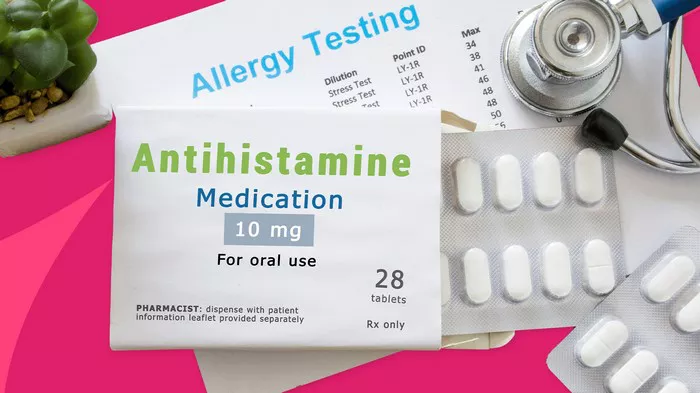Itching, medically known as pruritus, can range from a mild annoyance to a debilitating condition that significantly affects quality of life. Whether caused by allergies, insect bites, skin conditions, or systemic diseases, itching can often be managed with medications like antihistamines. This article explores the role of antihistamines in stopping itching, their mechanisms of action, types, effectiveness, and potential limitations.
Understanding Itching and Its Causes
Itching is a sensation that prompts the urge to scratch, often caused by various triggers that stimulate nerve endings in the skin. These triggers can be broadly categorized into:
1. Allergic Reactions
Allergies to substances like pollen, pet dander, or certain foods can cause itching due to the release of histamine in response to an allergen.
2. Skin Conditions
Eczema, psoriasis, hives, and contact dermatitis are common dermatological conditions associated with itching.
3. Insect Bites and Stings
Insect bites can trigger localized itching due to the body’s immune response to insect saliva or venom.
4. Systemic Diseases
Conditions such as liver disease, kidney failure, or certain cancers can cause generalized itching.
What Are Antihistamines?
Antihistamines are medications designed to block the effects of histamine, a chemical released by the immune system during an allergic reaction. Histamine binds to receptors in the skin, causing inflammation, redness, and itching. By inhibiting this interaction, antihistamines can help alleviate these symptoms.
Types of Antihistamines:
First-Generation Antihistamines
Examples: Diphenhydramine (Benadryl), Chlorpheniramine
These drugs cross the blood-brain barrier and often cause sedation.
Second-Generation Antihistamines
Examples: Loratadine (Claritin), Cetirizine (Zyrtec), Fexofenadine (Allegra)
These are less likely to cause drowsiness and are longer-lasting.
How Do Antihistamines Stop Itching?
Antihistamines work by blocking histamine receptors, specifically the H1 receptors, on cells in the skin and other tissues. This action prevents histamine from binding to these receptors and triggering itching, swelling, and other allergic symptoms.
Key Mechanisms:
Reduction of Inflammation: By preventing histamine’s effects, antihistamines reduce inflammation and associated skin irritation.
Calming Nerve Activity: Histamine also stimulates nerve endings that trigger the itch sensation. Antihistamines help calm these nerve responses.
Effectiveness of Antihistamines for Itching
The effectiveness of antihistamines depends on the cause of the itching and the type of antihistamine used.
1. For Allergic Reactions
Antihistamines are highly effective for itching caused by allergic reactions such as hives, hay fever, or insect bites. Both first- and second-generation antihistamines can relieve symptoms, though second-generation options are preferred for long-term use due to fewer side effects.
2. For Chronic Skin Conditions
In conditions like eczema or psoriasis, antihistamines may provide partial relief but are often used in combination with other treatments like topical steroids or moisturizers.
3. For Non-Allergic Causes
Antihistamines are less effective for itching caused by systemic diseases, as histamine is not the primary mediator in these cases. Other treatments targeting the underlying condition are usually required.
Comparing First- and Second-Generation Antihistamines
First-Generation Antihistamines:
Advantages:
- Fast-acting, making them ideal for acute itching.
- Sedative effects can help patients with nighttime itching.
Disadvantages:
- Sedation and drowsiness limit daytime use.
- Shorter duration of action requires multiple doses.
Second-Generation Antihistamines:
Advantages:
- Non-sedative or minimally sedative.
- Longer duration of action allows for once-daily dosing.
Disadvantages:
- May take longer to provide relief for acute itching compared to first-generation options.
When Are Antihistamines Not Enough?
While antihistamines are a cornerstone treatment for itching caused by allergies, they are not a universal solution.
Limitations:
Non-Histaminergic Itching:
Some types of itching, such as those caused by liver or kidney disease, are not driven by histamine and may not respond to antihistamines.
Severe Skin Conditions:
Conditions like severe eczema or psoriasis often require additional treatments, including topical corticosteroids, calcineurin inhibitors, or systemic therapies.
Neuropathic Itching:
Itching caused by nerve damage, such as in shingles or diabetic neuropathy, may require medications like gabapentin or pregabalin.
Potential Side Effects of Antihistamines
Although generally safe, antihistamines can cause side effects, especially with prolonged or inappropriate use.
Common Side Effects:
First-Generation Antihistamines:
- Sedation
- Dry mouth
- Dizziness
- Urinary retention
Second-Generation Antihistamines:
- Minimal sedation
- Headache
- Dry mouth (less common)
Precautions:
Antihistamines should be used cautiously in older adults, as first-generation options can increase the risk of falls and cognitive impairment.
They may interact with other medications, such as sedatives or alcohol.
Alternatives and Complementary Treatments for Itching
When antihistamines are insufficient or not appropriate, other treatments may be used:
1. Topical Treatments:
Calamine lotion
Corticosteroid creams
Menthol-based cooling agents
2. Systemic Medications:
Corticosteroids for severe allergic reactions.
Immunosuppressants for chronic skin conditions.
3. Non-Pharmacological Approaches:
Avoiding triggers like allergens or irritants.
Using moisturizers to maintain skin hydration.
When to Consult a Healthcare Provider
While antihistamines are readily available over the counter, it’s important to consult a healthcare provider if:
Itching persists despite treatment.
Severe allergic reactions like difficulty breathing or swelling occur.
Symptoms suggest an underlying systemic condition.
Conclusion
Antihistamines are effective at stopping itching caused by allergies and certain skin conditions, with second-generation options often preferred for long-term use due to their safety profile. However, not all types of itching respond to antihistamines, highlighting the importance of accurate diagnosis and tailored treatment. Understanding their mechanisms, benefits, and limitations ensures the optimal use of antihistamines in managing itching and improving quality of life.
You Might Be Interested In:


